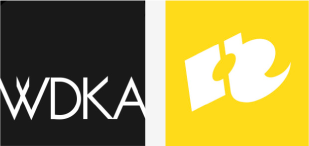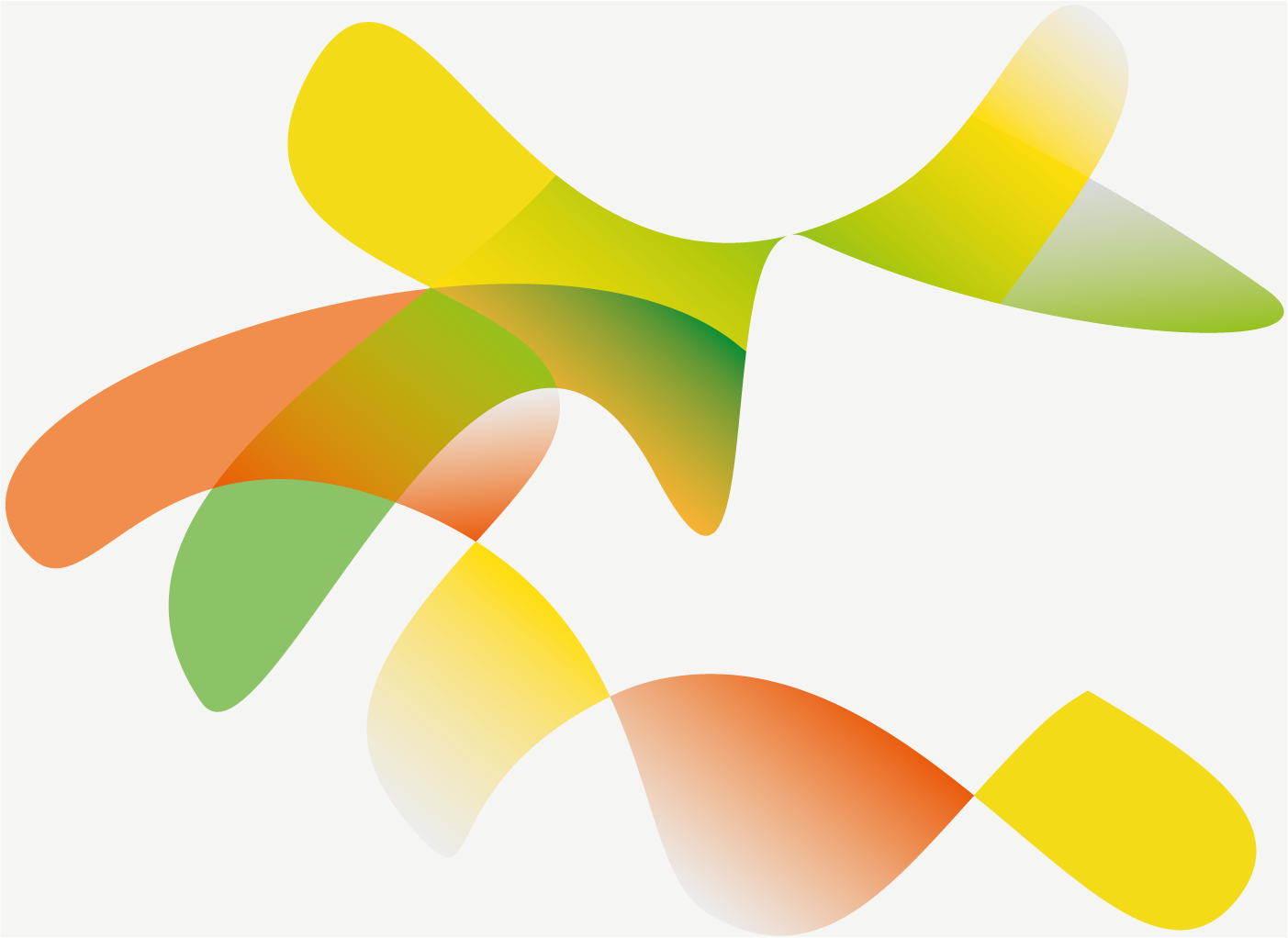The design research
Working as a design and theatre practitioner for over 20 years led to mainly tacit knowledge about interaction and participation. I have made this knowledge explicit in my design research.
I developed four perspectives on interaction, three methods for assessing and analysing interactive projects and two tools to train interaction design. In doing so, I created a methodology called PULSE.
My design research practice is based on the motto: ‘Practice what you preach’. This means that all design research is in itself interactive and participatory. I worked with 253 participants over the last two years who co-created the methodology in play-tests and try-outs.
PARTICIPATION AND INTERACTION
In the past 20 years, I have sought methods and ways to structure our interactive art projects and theatre plays. Over the years, I noticed that participation and interaction became increasingly important for civil servants and the government. Despite governments prioritising citizen participation for over ten years, the level of participation is stable, according to the CPB. Local governments struggle with their role in participatory processes and must balance the responsibility of implementing policy and facilitating initiatives.
On a micro level, at the Willem de Kooning Academy (WDKA), where I work, I see that students and tutors are increasingly prone to focus on participatory design and interaction with citizens of Rotterdam, starting in the first year and expanding in the ‘Practices’ in the third and fourth year.
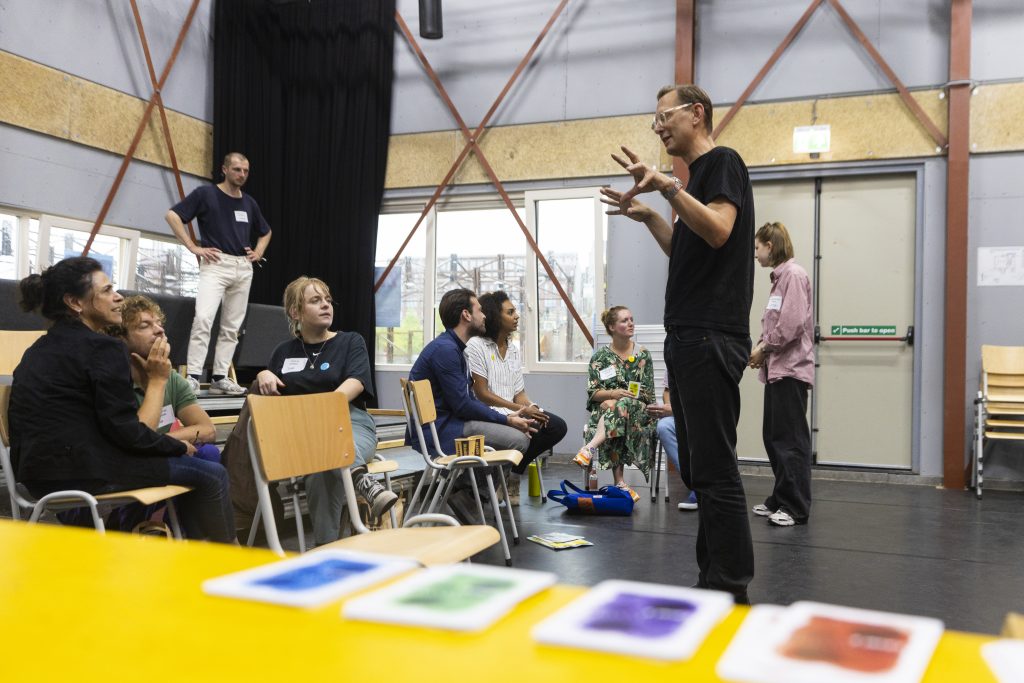
DESIGN CHALLENGE
According to these examples, municipalities and art schools consider participation and interaction necessary and meaningful. However, in my practice, I see it often fail in cities, neighbourhoods, schools and research. There is seldom enough time to build a trusting relationship when students engage with citizens in 8-week projects or civil servants, and professional social workers hop from one neighbourhood to the next, dropping valuable contacts and relationships. So, there is an evident pressure to find effective ways to engage people. This is the main design challenge we face.
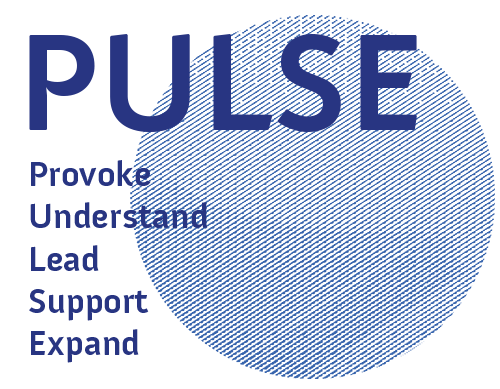
PULSE METHODOLOGY
With my research I introduce a methodology for designing and directing interactions derived from my Powerboat practice, which I call PULSE.
PULSE is an acronym for five abilities that inter-actors should possess. They must be able to provoke, understand, lead, support spect-actors, and expand the interactions with participants. The PULSE methodology is a framework for participatory and interactive projects in a broad sense. It is a scheme based on views, beliefs and values on participation and interaction that originate from my collaboration with Fokka Deelen.
PULSE can be used twofold:
1. ANALYTICAL LENS
As a research framework for joint reflection on interactive projects and processes and assessment through the lens of PULSE.
2. PRACTICAL TOOL
As a practical application in the form of a programme with exercises and workshops to train inter-actors, designers and directors to design and direct active participation and interaction.
Through this methodology as a lens and tool, I hope to inspire students, tutors, designers, theatre-makers and everyone who works with individuals and groups in an interactive way. I invite you to engage in this research and practice to improve your research, your classes and workshops, your performances or social projects.
The new practice
Over the past two years, the research prompted many additional research questions and intrinsic motivation to dive deeper, collaborate and continue with the PULSE program. Therefore, I aim to start a new research trajectory and apply the program in existing art and design education and as an independent ‘academy’ with Powerboat as the facilitator.
New research questions involve the dramaturgy of interaction and participation, participatory artistic research methods and training embodied learning and engaging didactics. I aim to expand on this in The Arts + Creative PD programme that starts with a pilot in 2023.
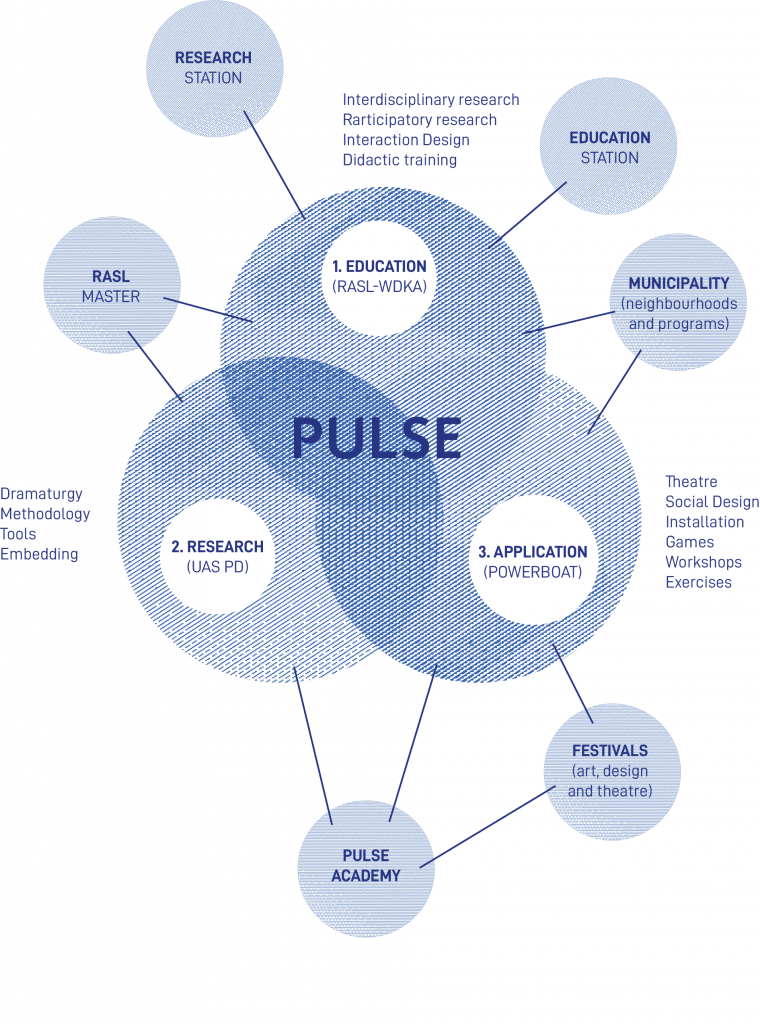
SERIOUS PLAY & GAMES
I am interested in developing ideas about participation and interaction. I believe that by adapting embodied learning, civil servants, designers, and students can start to bridge the gap between theory and practice more effectively.
The craft of designing and directing participation and interaction is learned through exercise and doing, besides studying theoretical frameworks and the analysis of the dramaturgy of interaction.
In this process, I see a huge role for play and serious games that enable students and tutors, civil servants and policymakers, social scientists and social workers to engage with each other. This is why I developed the PROVOKE game, and a series of exercises and workshops. I believe that we can learn to cooperate by meeting on the work floor and develop abilities to support participatory and interactive processes.
Additionally, in interaction we can explore and learn about vocabulary specific to all disciplines. Art, science and social partners often encounter misunderstandings and differences in expectations. We need to learn to speak each other’s language.
RESEARCH APPLICATION
My research is geared towards application in three potential fields:
1. APPLICATION IN EDUCATION
To support and develop engaging didactics
2. APPLICATION IN RESEARCH
To practice and develop participatory design research practices.
3. APPLICATION IN POWERBOAT
To offer and develop practical training and interactive theatre plays, games and installations.
PULSE ACADEMY
Based on the workshops, exercises and games I developed during the Master Design, we started a PULSE Academy for design and direction of interaction and participation. In addition, we are developing workshop programs for students and professionals that want to get introduced to or expand their understanding of participatory processes and interaction design.
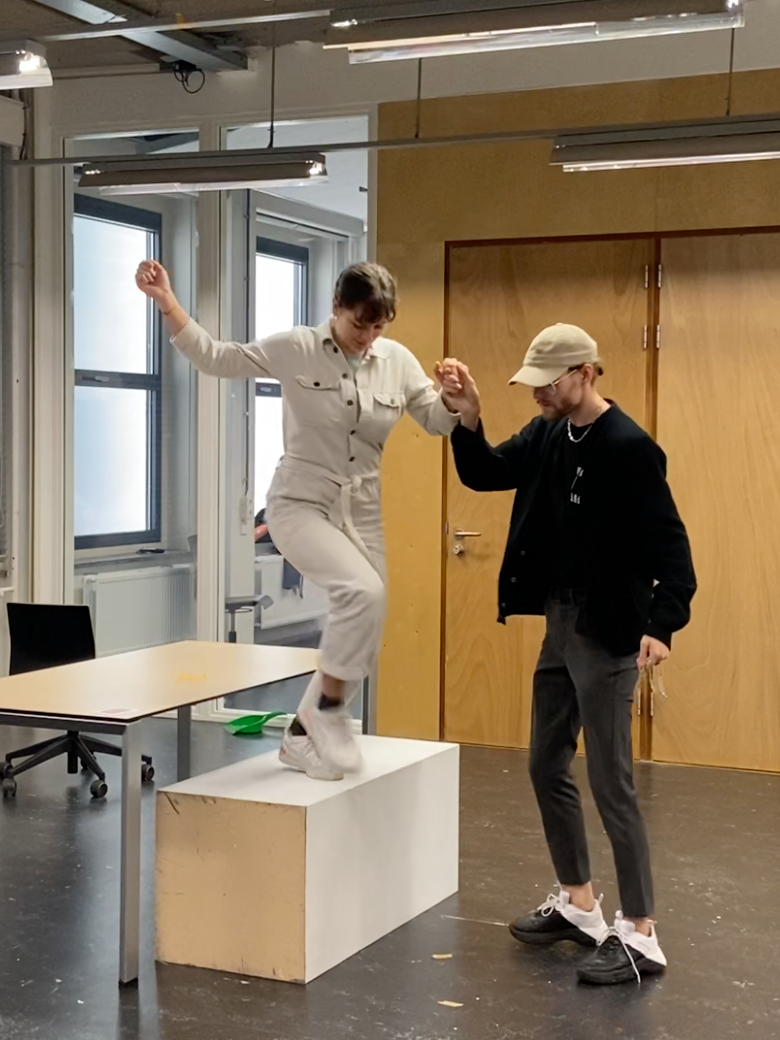
Part of the PULSE Academy is a series of PULSE games that provoke interaction, learn to understand, lead, support and expand interactive processes. They are available on the Powerboat website.
the designer
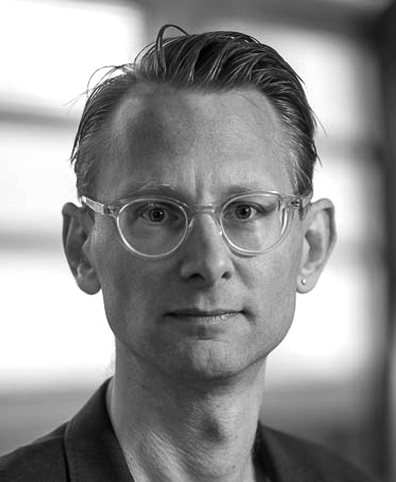
My name is Bas Kortmann. I am a spatial designer, theatre-maker and tutor at the Willem de Kooning Academy and Codarts in Rotterdam.
Actrice Fokka Deelen and I founded the Powerboat Theatre Group in 2001, with which we primarily produce interactive performances. Over time, Powerboat evolved from a theatre group into a creative studio that produces interactive plays, performances, installations, games and social projects.
Fokka and I unite our interest in other people, our heartfelt disapproval of passive consumerism and our mutual preference for active co-production into the substantive basis of Powerboat. With Powerboat, we, therefore, design and direct active participation and interaction. We activate participants by making them aware through engagement. As a result, we create intense experiences that stick and impact people’s actions, opinions, attitudes and emotions.
My objective in the past twenty years was to involve and engage people. As an educator and spatial designer, I have created space for interaction. I aim to share my knowledge and expertise. Moreover, I wish to exchange ideas about how to involve and engage people with others.
GET IN TOUCH
Click here to read my publication
+31 (0)6 10288664
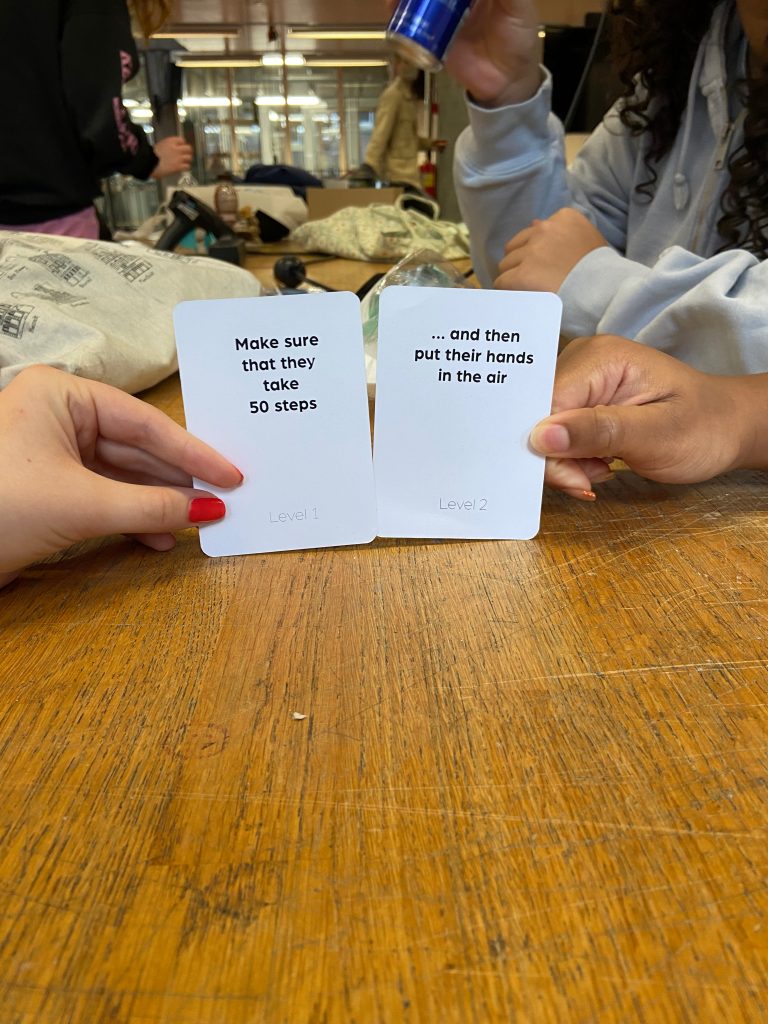
The Provoke game is an intelligent, manageable tool that allows you to experience the multi-layered complexity
Arlon Luijten, RASL
(and the fun thereof)
of interactive thinking, working and design very directly and quickly.
The master Design allowed me to create a framework that made my tacit knowledge explicit. The participatory character of the Master Design program proved to be crucial. It challenges students to search for relevant participants, expanding their knowledge network.
While constantly learning by doing in the past, I now learned to share my findings and open up my design research process to the outside world. This accelerated the creation process and provided a firm framework for further development.
I recommend the Master Design program to anyone who seeks to engage with participatory design research, in which working with participants is key.


